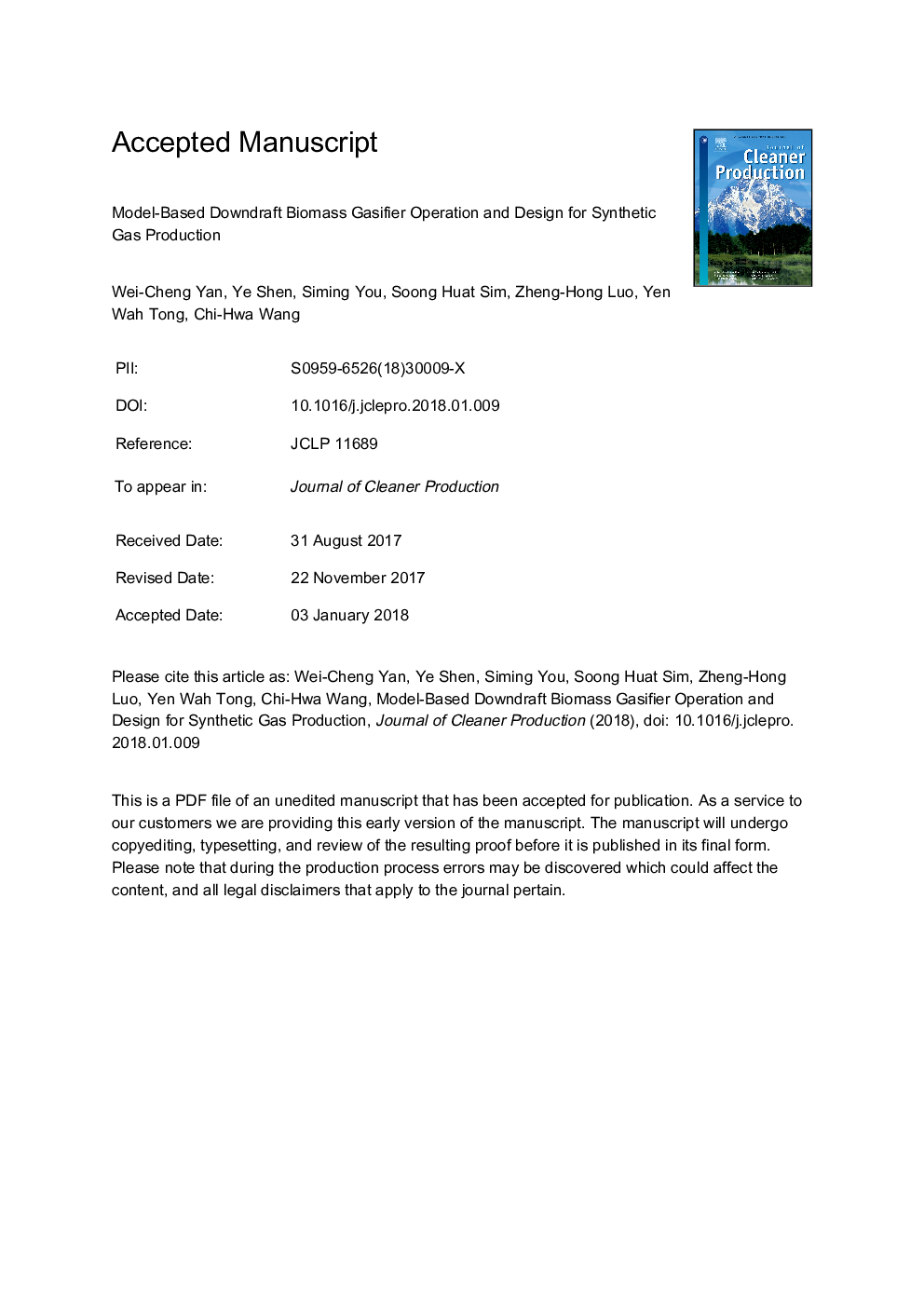| Article ID | Journal | Published Year | Pages | File Type |
|---|---|---|---|---|
| 8098442 | Journal of Cleaner Production | 2018 | 56 Pages |
Abstract
In this study, three-phase flow model together with a thermal-equilibrium model was developed to study the operation of downdraft biomass gasifiers. Gasification experiments were conducted to obtain pyrolysis kinetics and validate the models. A good agreement was found between experiment data and model predictions, in terms of syngas composition and temperature, respectively. Kinetics based on experimental study improves the accuracy of simulation. The thermal-equilibrium model was applied to study the effects of air to biomass ratio on gas composition, LHV (lower heating value), and temperature. The 3D multiphase flow model was applied to investigate the spatial distributions of various parameters (i.e. pressure, gas velocity, temperature, and gas composition) inside the gasifier that are critical to the design of gasifier. A rough division of four gasification zones was determined based on temperature profile. It was also found that the cold gas efficiency was around 63% based on CFD (computational fluid dynamic) simulation. The temperature distributions could be used to guide the application of heat resistant materials inside the gasifier. In addition, the simulation results indicated that blockage of the gasifier has a high chance to occur at the top of reduction bell when using feedstock of high metal contents. Effects of reduction bell dimension and operation conditions on the temperature distribution and syngas production were also investigated by the 3D CFD model, which sheds light on the improvement of the design and operation of reactor. The syngas production could be enhanced by varying the size of reduction bell.
Related Topics
Physical Sciences and Engineering
Energy
Renewable Energy, Sustainability and the Environment
Authors
Wei-Cheng Yan, Ye Shen, Siming You, Soong Huat Sim, Zheng-Hong Luo, Yen Wah Tong, Chi-Hwa Wang,
